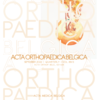Meniscal extrusion under increasing varus in stress patients with a medial meniscus posterior root-tear
Medial meniscus; root-tear; extrusion; MRI; gait analysis
Published online: Jan 20 2023
Abstract
Posterior root-tear of the medial meniscus and accompanied meniscal extrusion can lead to functional loss of the meniscus. The aim of this study is to assess medial meniscus extrusion at increasing varus forces utilizing magnetic resonance imaging (MRI), in order to evaluate the contribution of the adduction moment of the knee during gait. We prospectively enrolled 19 patients (38 knees). Patients underwent gait analysis testing to calculate adduction moment, followed by an MRI at rest and with increasing varus forces according to the patient’s specific adduction moment. Meniscal extrusion and root gap at increasing varus forces were measured and compared. Functional outcomes and their association to meniscal extrusion was analyzed. We found the average meniscal extrusion at rest, 100% and 150% applied varus force for the control group to be 1.7mm, 1.7mm and 1.9mm, respectively; and for the index group average meniscal extrusion was 5.3mm, 6.4mm and 6.8mm, respectively. Meniscal extrusion increase from rest to 100% varus force was significantly higher in the index group (p=0.0002). Further meniscal extrusion and root gap increase from 100% varus force to 150% varus force did not show a statistically significant difference (p=0.39). The association between greater increase of meniscal extrusion with varus force and WOMAC scores was not statistically significant. In conclusion this study defines the contribution of the varus force component of the adduction moment to meniscal extrusion, in patients with a medial meniscus posterior root-tear.
